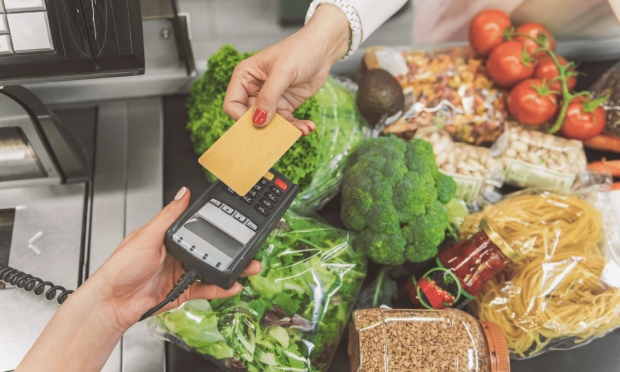In-Store Grocery Shopping Melds With Digital Payments To Nourish Commerce

Would it surprise you to learn that nearly 79 percent of U.S. grocery shoppers still prefer to buy at least some of their groceries in-store? Prepare to be amazed, then, because the mass digitization of grocery shopping and fulfillment won’t wipe physical stores off the map, given signs of “an omnivorous appetite for both brick-and-mortar and digital purchasing options.”
That’s according to PYMNTS November 2020 Omnichannel Grocery Report: Leveraging Digital Purchasing Channels To Boost Conversion, an ACI Worldwide collaboration. Resulting from surveys of a census-balanced panel of over 2,000 U.S. consumers, we set out to discover how much of their groceries people buy online versus in-store, how many of them would be willing to switch grocers to access a wider selection of digital payments, and which options grocers can provide to meet current customers’ expectations while also attracting new shoppers.
“Shopping and paying in physical store locations is still the most common way for consumers to buy their groceries,” the new report found, “but a strong majority of consumers buy at least some of their groceries online. Our survey shows that 79.6 percent of all consumers who buy groceries report purchasing them in-store, while 63.9 percent make at least one of their routine grocery purchases online. How consumers go about buying these items depends on the types of products being purchased, however.”
Shopper’s Choice
This is not to say the digital shift in grocery isn’t as real as it appears. The Omnichannel Grocery Report states that “17.2 percent of all consumers have switched from grocery shopping in stores to doing so online since the health crisis began. Ordering groceries online for home delivery has become particularly popular, as 23 percent of U.S. consumers — 57 million individuals — say they are ordering more groceries online for home delivery now than they did before the pandemic’s onset. Twenty-one percent of consumers, or 53 million individuals, are now ordering online for curbside pickup more than they did before the pandemic began, and 12 percent of consumers, or 30 million individuals, are now doing the same for in-store pickup.”
Those numbers indicate more of a mass trial period for digital grocery than a pure migration to that channel. But grocery operations should take note, as digital payment options are one brick-and-mortar modification that stands to swing preferences back toward more in-store.
“Many of the consumers who grocery shop in stores are not only interested in using touchless payments at the brick-and-mortar point of sale but would be willing to leave their favorite grocers if other grocers offered touchless payment options that they want to use,” per the Omnichannel Grocery Report. “More than one-third of consumers who buy groceries — 65 million individuals — would be willing to switch to grocers that offer touchless in-store payment technologies, such as digital wallets, QR codes, cards on file and POS credit options. This presents a major opportunity for grocers to attract new customers by adopting the touchless payment options that consumers want to use to pay.”
Eat, But Don’t Touch
If “grocers’ biggest chance for gaining new customers lies in focusing on delivering digital payment options to the 63.9 percent of omnichannel consumers who regularly use a combination of both brick-and-mortar and digital channels to buy groceries,” as the new Omnichannel Grocery Report finds, then grocers large and small have their marching orders.
Either way, it’s touchless payments that people want and that’s regardless of channel. This is a clear signal to grocery chains that payments are a decisive factor in consumer choice.
“We observe high levels of interest in using touchless payment options at the brick-and-mortar point of sale among consumers who have shifted to buying some of their groceries online, whether they use contactless credit and debit cards, digital wallets, cards on file or another digital method,” the report states. “Far fewer consumers are actually using these methods, however, suggesting an untapped demand for them. Our research shows that 16.5 percent fewer consumers use contactless credit cards than would like to, for example, and 15.1 percent fewer use contactless debit cards than would like to.”
This isn’t theoretical. Our research shows that over 35 percent of consumers would drop their current grocer for one where they can pay in-store, no touch. “Consumers who have already used touchless payments in-store are even more willing to make the switch, as 40.6 percent of them say so,” per the new Omnichannel Grocery Report.